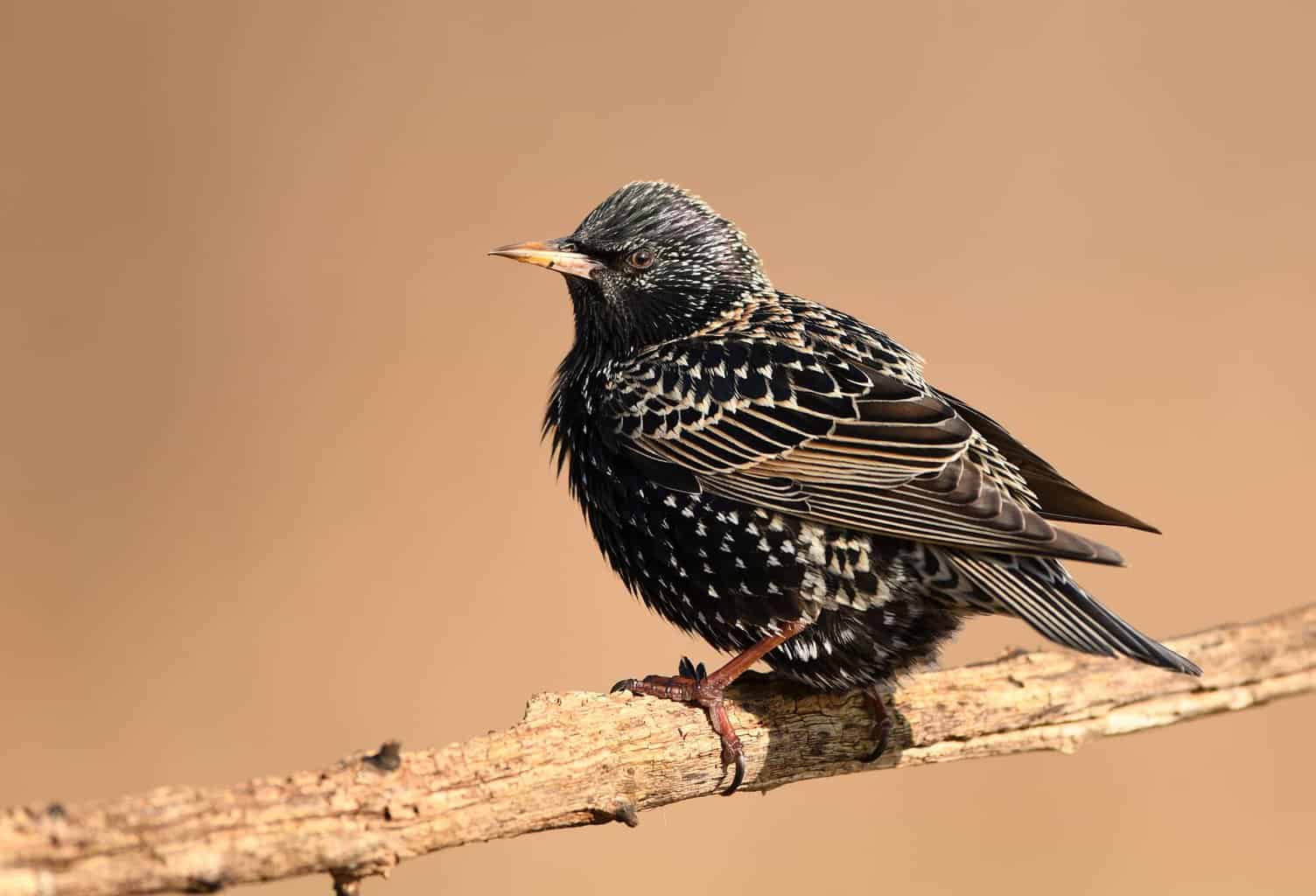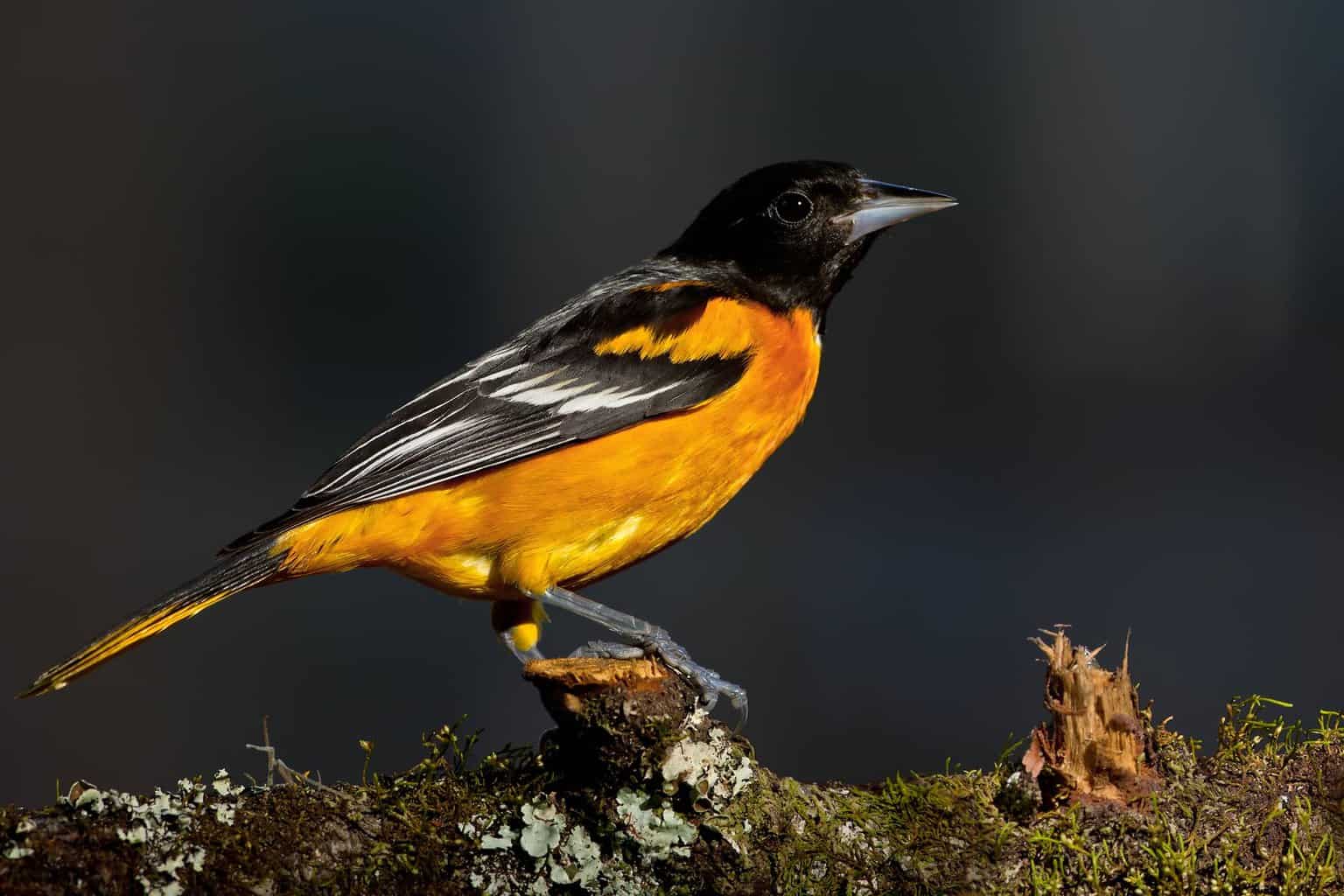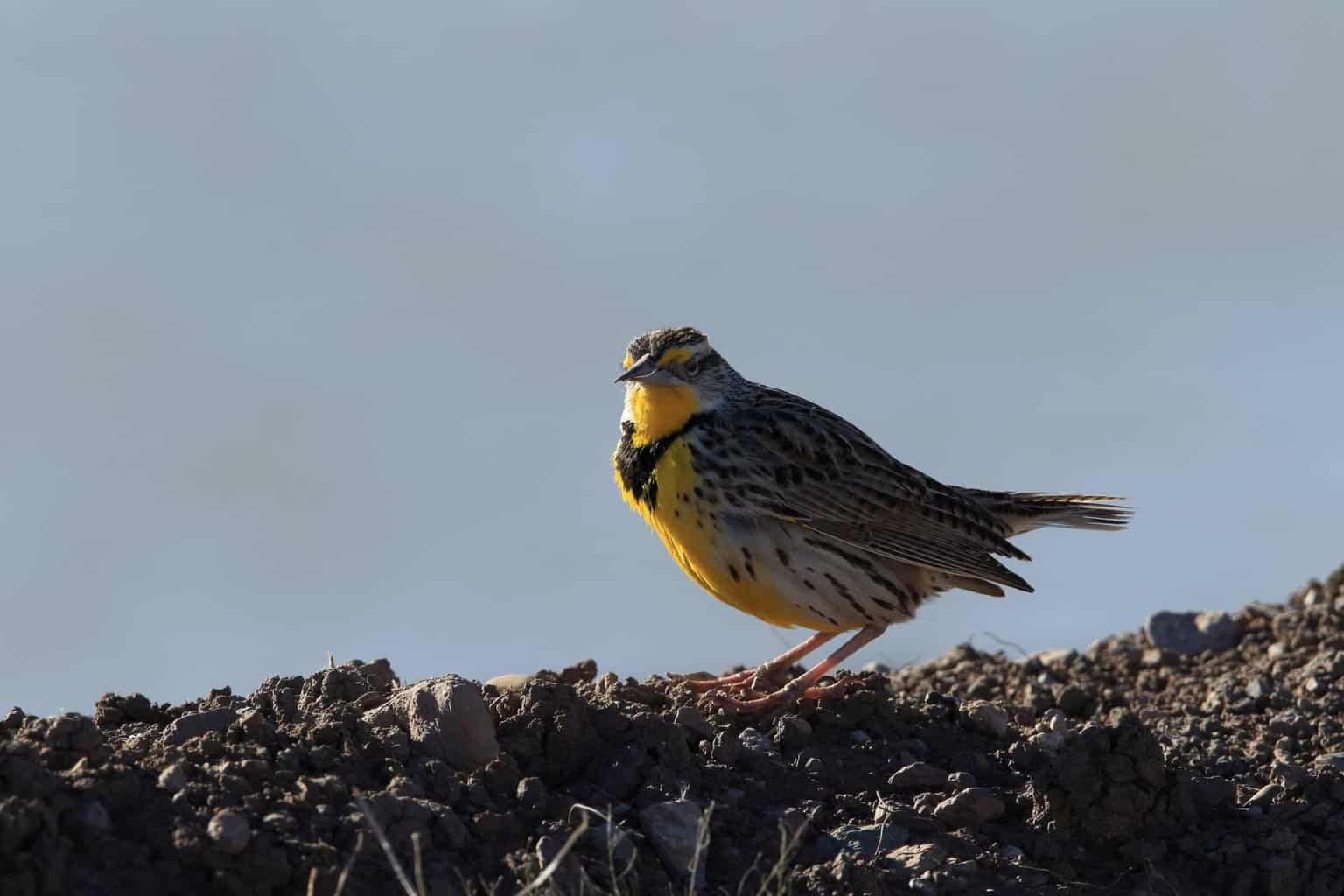Michigan has many bird species. One interesting family of birds to think about and look for are the American blackbirds, in the Icteridae family. These, along with one common European ‘blackbird’ – the European starling, can be found in this state.
Learning more about the blackbirds in Michigan can help you identify them correctly. And it might also help you halt declines in their numbers. Read on to find out more about the key species that you might encounter in this area:
Red-Winged Blackbird

- Scientific Name: Agelaius phoeniceus
- Length: 6.7 – 9.1 in (17 – 23 cm)
- Weight: 1.1 – 2.7 oz (32 – 77 g)
- Wingspan: 12.2 – 15.8 in (31 – 40 cm)
Red-winged blackbirds can be seen in Michigan year-round. But they are most prevalent during the summer months. They are frequently spotted in the state during the breeding season, sometimes along forest edges.
Though most Red-wing blackbirds migrate south from Michigan for winter, some individuals do remain here even during the coldest months.
The males are easiest to identify, with their black coloration and red-orange wind flashes. The females are a less dramatic streaky brown.
European Starling

- Scientific Name: Sturnus vulgaris
- Length: 7.9 – 9.1 in (20 – 23 cm)
- Weight: 2.1 – 3.4 oz (60 – 96 g)
- Wingspan: 12.2 – 15.8 in (31 – 40 cm)
European starlings are not native. However, they were introduced and are now a rather common species here, and in many other states—sometimes in the boreal forests.
These European blackbirds are not related to other birds on this list but are members of the thrush family.
These introduced birds are found on many birdwatchers’ checklists in the summer, and only slightly less frequently spotted over the winter months in Michigan. Close by, striking purple, blue and green iridescence can be seen in their plumage.
Common Grackle

- Scientific Name: Quiscalus quiscula
- Length: 11 – 13.4 in (28 – 34 cm)
- Weight: 2.6 – 5.0 oz (74 – 142 g)
- Wingspan: 14.2 – 18.1 in (36 – 46 cm)
Though this is a near-threatened species, the common grackle is the second most frequently spotted American blackbird in the state during the summer months.
Arriving in spring from their wintering grounds to the south, they will breed in Michigan in summer before most migrate back southwards for the winter.
The males and females are both black, though the males are somewhat glossier than their female counterparts. They usually have a black throat and can be distinguished from other blackbirds by their taller bodies and slightly longer tails.
Brown-Headed Cowbird

- Scientific Name: Molothrus ater
- Length: 76.3 – 8.7 in (19 – 22 cm)
- Weight: 1.3 – 1.8 oz (42 – 50 g)
- Wingspan: 14.2 in (36 cm)
The brown-headed cowbird is occasionally resident in Michigan year-round, but most arrive in March and depart in around July.
So they are most likely to be spotted in the state during this time.
The males are black with brown heads, and the females are much smaller and gray-brown in color. These birds don’t make their own nests but lay their eggs in the nests of other species.
Baltimore Oriole

- Scientific Name: Icterus galbula
- Length: 6.7 – 7.5 in (17 – 19 cm)
- Weight: 1.1 – 1.4 oz (30-40 g)
- Wingspan: 9.1 – 11.8 in (23 – 30 cm)
These colorful songbirds spend the summer in Michigan, arriving as early as April and sometimes staying as late as February.
However, the best months to spot them here are between May and September, as the majority settle in the state for use as breeding grounds.
The females are yellow and grayish-brown, while the males are bright orange and black, with white wing bars.
You may see them in gardens and elsewhere foraging for insects, and fruit. Nectary and fruiting plants in your space should help to attract them to your area.
Eastern Meadowlark

- Scientific Name: Sturnella magna
- Length: 7.5 – 10.2 in (19 – 26 cm)
- Weight: 3.2 – 5.3 oz (90 – 150 g)
- Wingspan: 13.8 – 15.8 in (35 – 40 cm)
This is a near-threatened species in Michigan. However, they are sometimes spotted here during the summer months, and their lovely fluting and varied songs may also be heard in appropriate habitats.
These birds are medium-sized songbirds, with pale brown and black backs, and yellow patches on their fronts. They also have a distinctive black band across the chest.
Bobolink

- Scientific Name: Dolichonyx oryzivorus
- Length: 5.9 – 8.3 in (15 – 21 cm)
- Weight: 1.0 – 2.0 oz (29 – 56 g)
- Wingspan: 10.6 in (27 cm)
Bobolinks can sometimes be spotted in Michigan during the summer breeding season. However, they are most commonly seen here during the spring migration period, in May and June, as they are spotted while passing through the state.
Females and non-breeding males have plain-looking feathers with brown streaking. There is a darker line around their eyes, and a stripe on their heads.
The males look very different in the breeding season, with white patches on their backs, black undersides, and striking patches of yellow that look like hair on their heads.
Rusty Blackbird

- Scientific Name: Euphagus carolinus
- Length: 8.3-9.8 in (21-25 cm)
- Weight: 1.7-2.8 oz (47-80 g)
- Wingspan: 14.6 in (37 cm)
Though a vulnerable species, whose numbers are rapidly declining, these birds are also sometimes spotted in Michigan during their spring and fall migrations.
They have been seen here, most frequently between March and May, and September and November.
The females are a rusty-tinged grayish-brown hue. The males are dark glossy black in summer when they are wearing their breeding plumage, and have a rusty brown look for the rest of the year.
Orchard Oriole

- Scientific Name: Icterus spurius
- Length: 5.9 – 7.1 in (15 – 18 cm)
- Weight: 0.6 – 1.0 oz (16 – 28 g)
- Wingspan: 9.8 in (25 cm)
Orchard orioles are common birds spotted in Michigan during the breeding season in summer and occasionally appear on the checklists of summer birdwatchers in the state.
They may arrive in April, and stick around until September. But they are most frequently spotted here between May and August.
The males and females of this species have very different looks. The males are black and red, while the females are mostly yellowish-green. They will appreciate it if you place hummingbird feeders and plant native berry plants.
Brewer’s Blackbird

- Scientific Name: Euphagus cyanocephalus
- Length: 7.9 – 9.8 in (20 – 25 cm)
- Weight: 1.8 – 3.0 oz (50 – 86 g)
- Wingspan: 14.6 in (37 cm)
These birds are not commonly spotted in Michigan. However, they are said to occur regularly in the state.
Sightings of Brewer’s blackbirds have been reported year-round. But you are most likely to encounter these elusive birds during the breeding season, from April to July.
These are medium-sized blackbirds. The males are glossy black with darker wings, a purplish sheen on their heads, and green iridescence on their bodies. The females are plain brown all over.
Yellow-Headed Blackbird

- Scientific Name: Xanthocephalus xanthocephalus
- Length: 8.3 – 10.2 in (21 – 26 cm)
- Weight: 1.6 – 3.5 oz (44 – 100 g)
- Wingspan: 16.5 – 17.3 in (42 – 44 cm)
These birds are another uncommon bird in Michigan’s blackbird family. They have also been spotted here throughout the year, but are most likely to be spotted breeding in the state between April and August.
These striking birds are larger than the red-winged blackbird. The males are glossy black with bright yellow heads and undersides. The females are brown with a duller-yellow color on their heads.
Western Meadowlark

- Scientific Name: Sturnella neglecta
- Length: 6.3 – 10.2 in (16 – 26 cm)
- Weight: 3.1 – 4.1 oz (89 – 115 g)
- Wingspan: 16.1 in (41 cm)
These birds are rarely spotted in Michigan. However, they are recognized as regularly occurring here and can be spotted between March and August.
These songbirds have melodious voices and are a cheery sight with their bright yellow bellies, and brown and white backs.
They are around the same size as a robin and can be seen foraging for insects in summer and eating seeds or grain in the winter months.
Conclusion
You are most likely to see these blackbird family species in Michigan. But the hooded oriole, shiny cowbird, and Bullock’s oriole have also been seen as accidental, vagrant visitors.

